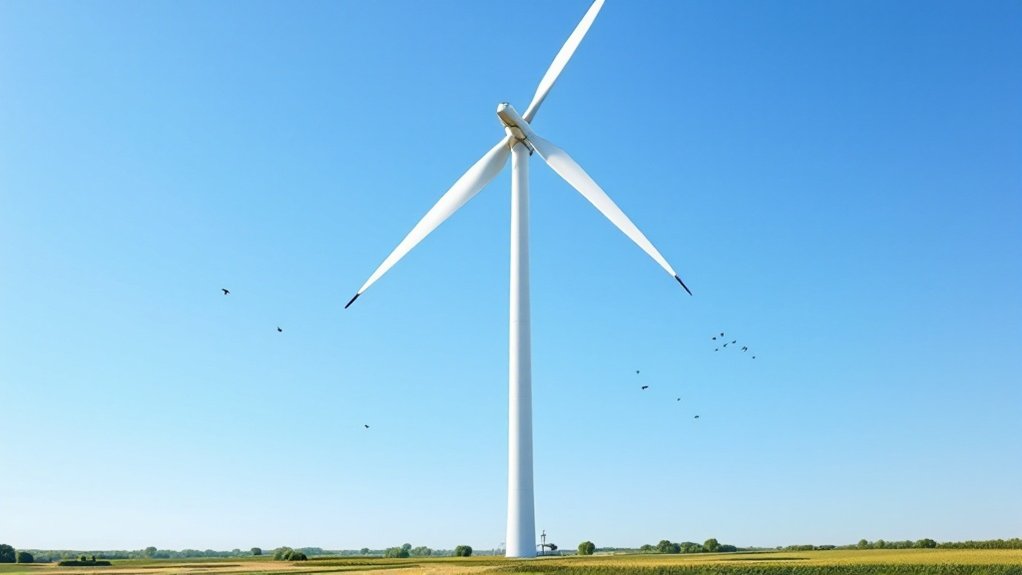Modern wind turbines are absolute monsters, weighing between 200-400 tons each – that’s like a small fleet of commercial airplanes stacked on top of each other. The tower alone accounts for up to 40% of the total weight, while the massive blades tip the scales at 5-15 tons each. The foundation? A whopping 1,000 tons of concrete. Trust us, there’s a lot more to these towering giants than meets the eye.

When it comes to wind turbines, size matters – and these giants of renewable energy pack some serious weight. A typical utility-scale wind turbine tips the scales at 200-400 tons total. That’s right – each one weighs about as much as a small fleet of commercial airplanes. The GE 1.5-megawatt model, a relatively modest specimen, weighs in at 164 tons, while the beefier Gamesa G87 2-megawatt turbine hits a whopping 334 tons.
Let’s break it down piece by piece, because these monsters aren’t exactly built like your backyard windmill. The blades alone are enough to make your head spin – averaging 5-15 tons each. A complete blade assembly on the Vestas V90 weighs 40 tons. Modern turbines like the GE Haliade-X have rotor spans that are 6.5 times larger than a Boeing 737’s wingspan. The swept area of these massive rotors can reach 452.4 square meters for a 24-meter diameter turbine.
And those massive towers? They’re not messing around, accounting for 30-40% of the total turbine weight. The Gamesa G87’s tower alone weighs 220 tons. That’s heavier than a blue whale, just sitting there holding everything up.
The nacelle – that box-like structure at the top housing all the mechanical goodies – isn’t exactly lightweight either. Housing the generator, gearbox, and other crucial components, these technological powerhouses weigh between 56 and 75 tons, depending on the model. These efficient machines help generate clean electricity while contributing to reduced carbon emissions.
Wind turbines pack quite a punch up top – their nacelles weigh as much as a dozen elephants combined.
But wait, there’s more. The foundation these behemoths sit on? Now that’s really heavy. We’re talking over 1,000 tons of concrete, spread across an area 30-50 feet wide and potentially plunging 30 feet deep.
The trend in wind turbine design is clear: they’re getting bigger, and consequently, heavier. Offshore turbines, particularly, are putting on weight like they’re training for a heavyweight championship.
This creates some interesting challenges – you need specially designed cranes just to install them, and transportation becomes a logistical puzzle. Manufacturers are trying to slim things down with new materials, but there’s only so much you can do when you’re building something tall enough to make skyscrapers jealous.








